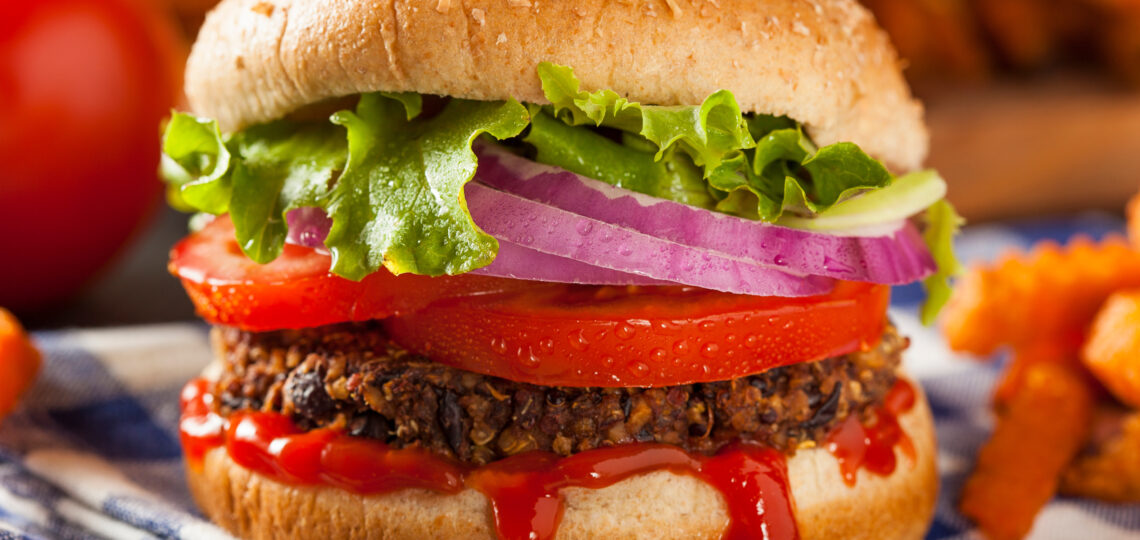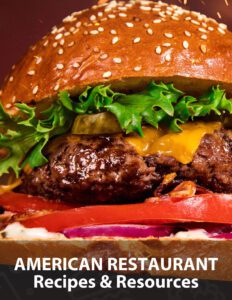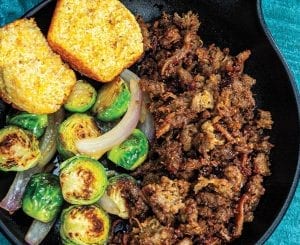15 years ago, you may have seen a salad as the only plant-based menu item at a restaurant. Today, the plant-based industry has exploded in popularity, as restaurants are adding more vegan and vegetarian menu options to accommodate those with dietary restrictions or for those omnivores looking to expand their palate.
Plant-Based Trend
More and more American consumers are embracing the plant-based diet to some degree. Common reasons that people choose plant-based products over animal protein include that they believe it’s healthier, better for the environment, more humane, tastes better, and/or provides more energy. In addition, the following statics depict the increase in demand for plant-based products:
- 80% of consumers say they would try plant-based proteins.
- 34% of consumers eat vegetarian/vegan dishes once a week or more.
- 52% of Millennials and 48% of Gen Zers are increasingly incorporating plant-based proteins into their diet. (1)
According to Dataessential, in 2021 the occurrence of plant-based menu items appeared on 4.7% of US menus, compared to only 0.1% in 2014. (2) This trend is only expected to rise with the increasingly popularity of plant-based foods.

What is Plant-Based?
Though various interpretations exist, the simple definition of “plant-based” is a dish or diet comprised of ingredients derived all or mostly from plants. (3)
Vegan, Vegetarian, & Flexitarian, – What’s the difference?
Vegans omit all animal products from their diet including meat, seafood, dairy, eggs, and honey. Many will also use cruelty free products such as vegan leather. Vegetarians omit all meat, seafood, and poultry but may consume eggs, dairy, and honey. Pescatarians omit meat and poultry from their diet but consume fish. Flexitarians adopt a more flexible approach and eat mostly plant-based but may include meat or seafood occasionally.
Is a Plant-Based Diet the same as Gluten Free?
A whole foods, plant-based diet contains many naturally gluten free foods such as fruits, vegetables, certain grains, nuts, seeds, and legumes. However, plant-based is not the same as gluten free. Gluten is naturally found in some grains such as wheat, barley, and rye. Many plant-based protein products such as veggie burgers may use wheat as an ingredient. If you or a customer is gluten-sensitive, be sure to check the ingredient statement to see if a product contains any wheat or gluten derivatives.

Can you get enough protein on a plant-based diet?
Yes, you can! According to the Dietary Reference Intake, the average sedentary human should consume 0.8 grams of protein per kilogram of body weight, or 0.36 g per pound. (4) If a person weighs 150 pounds, they should consume about 55 grams of protein per day. Along with natural sources such as legumes, nuts, and seeds, many plant-based products also have a considerable amount of protein. One 4.0oz serving size of Sysco Simply Plant Based Protein (Pulled Oats) has 33g of protein in it!
What are some examples of plant-based meals?
If you’re looking to incorporate more plant-based options into your diet, here are 10 delicious meals ideas:
- Indian Lentil Dal
- Jackfruit Carnitas
- Air-Fried MORNINGSTAR FARMS® Veggie Chik’n Nuggets
- Quinoa and Garbanzo Bean Tabouli
- Smoky IMPOSSIBLETM Plant-Based Burgers
- Spaghetti and Meatless Meatballs
- Plant-Based Chik’n Parmesan
- JUST Egg Veggie Frittata
- Vegan Chik’n and Waffles
- Beyond Meat “Beef” Taco Salad
Sources:
- https://www.supherbfarms.com/resource-center/white-papers/the-new-meat/?creative=554237145587&keyword=plant%20based%20consumer%20trends&matchtype=e&network=g&device=c&utm_term=plant%20based%20consumer%20trends&utm_campaign=GSN+I+Trend+Report&utm_source=adwords&utm_medium=ppc&hsa_acc=6842601354&hsa_cam=14971087918&hsa_grp=131574280987&hsa_ad=554237145587&hsa_src=g&hsa_tgt=kwd-911165987703&hsa_kw=plant%20based%20consumer%20trends&hsa_mt=e&hsa_net=adwords&hsa_ver=3&gclid=EAIaIQobChMIvo3k97Oc-AIVgxXUAR1_SwcdEAAYASAAEgKaxvD_BwE
- https://mtinfinite.datassential.com/byo?words=plant%20based
- file:///C:/Users/vdel2691/Downloads/Plant%20Based%20Is%20Sprouting%20Webinar%20Deck%20(1).pdf
- https://www.healthline.com/nutrition/how-much-protein-per-day#:~:text=Most%20official%20nutritional%20organizations%20recommend,per%20kg)%20of%20body%20weight.












